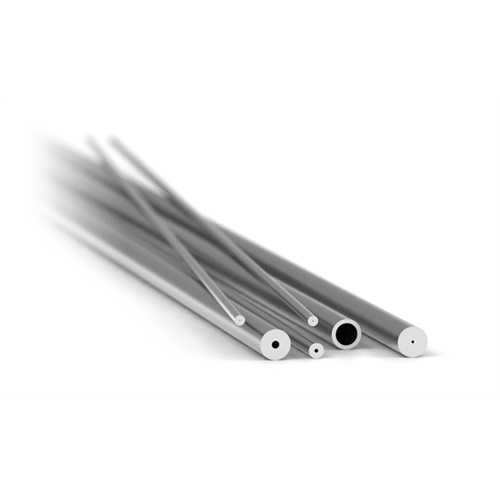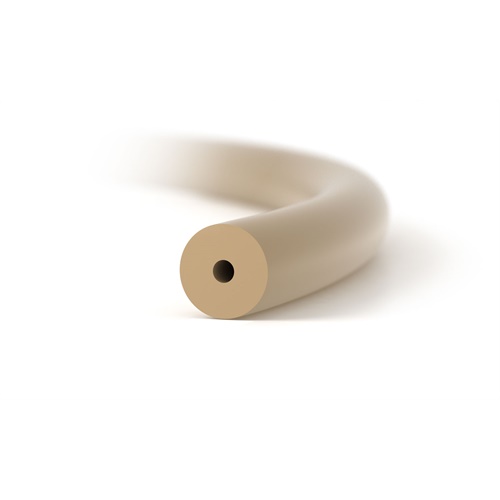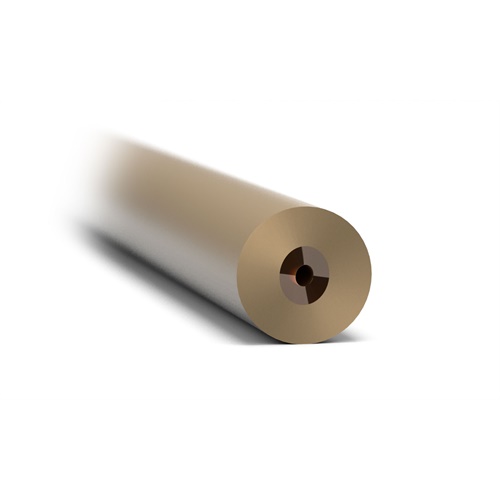Tubing materials overview
Technical information about tubing materials
Stainless steel
The traditional tubing material for fluidic systems with higher pressures is stainless steel, or more specifically AISI 316 austenitic stainless steel, which is an inherently corrosion-resistant metal alloy due to the content of chromium, nickel, and molybdenum.
Our thorough preparation and cleaning procedure guarantees stainless steel tubing that is truly ready-to-use, with flat, burr-free ends and a clean finish. This care is important in achieving zero-dead-volume connections and good chromatographic results. We offer a variety of precut lengths as well as longer lengths (5’ and 25’) of some sizes. Tubing OD 1/32”, 1/16” and 1/8”.

PEEK – PolyEtherEtherKetone
PEEK polymer is the flagship member of the poly(aryl)etherketone family of polymers. It has excellent chemical resistance to virtually all commonly used solvents. However, the following solvents are usually not recommended for use with PEEK: nitric acid; sulfuric acid; halogenated acids, such as hydrofluoric acid and hydrobromic acid (hydrochloric acid is approved for use in most applications); and pure halogenated gases.
Additionally, due to a swelling effect, be cautious in using the following solvents with PEEK tubing: methylene chloride, THF, and DMSO in any concentration and acetonitrile in higher concentrations. Excellent thread strength.

PEEK-lined stainless steel
The PEEK-lined stainless steel (PLS) tubing offers a PEEK inner layer which serves as the fluid pathway, jacketed by stainless steel. This construction make this type of tubing biocompatible, chemically inert to most commonly used solvents, while still offering a very high pressure tolerance.
• Ideal for bioinert UHPLC applications
• Can be bent into various shapes without affecting performance

PEEKsil™
PEEKsil™ tubing has a fused silica core that provides an ideal capillary fluidic pathway. It executes a consistent and rigid fluid pathway with extremely tight tolerances and industry-accepted chemical properties. Our PEEKsil™ tubing has excellent chemical compatibility and exceptionally low absorption characteristics.
• Ideal for capillary fluidic applications
• Exceptionally low absorption characteristics

Fluoropolymers
PTFE – PolyTetraFluoroEthylene
The stability of the carbon-fluorine bond in combination with the very high polarity of the fluorine atom will create the unique properties of the high crystalline PTFE paste fluoropolymer. These properties are unlikely to be beaten by any other plastic material. The physiological inertness of the polymer makes PTFE ideal for medical applications. Since PTFE does not melt, it has to be paste-extruded, followed by sintering to obtain its final properties.
- Outstanding low friction properties and non-stick characteristics.
- Outstanding chemical resistance.
- Excellent resistance to aging.
- Outstanding continuous service temperature from -200°C up to +260°C.
ETFE – Ethylene TetraFluoroEthylene
ETFE is a copolymer of ethylene and tetrafluoroethylene.
ETFE is stiff, tough and has a higher resistance to wear than most fluoropolymers.
- Excellent non-stick characteristics
- Low liquid permeability
- Good resistance to radiation
- High light transmission
FEP – Fluorinated Ethylene Propylene
FEP is a copolymer of tetrafluoroethylene and hexafluoropropylene with a linear molecule chain. FEP has almost the same characteristics as PTFE and is transparent, even though it is a semi-crystalline polymer.
- Excellent low friction properties and non-stick characteristics
- Excellent chemical resistance
- Outstanding continuous service temperature from -200°C up to +200°C
- Extremely smooth surface
PFA – PerFluoroAlkoxy
PFA is a transparent perfluoroalkoxy copolymer that is considered to be the thermoplastic fluoropolymer with the closest properties to PTFE, whilst being melt processable.
- Low friction properties and non-stick characteristics
- Outstanding chemical resistance
- Outstanding service temperatures up to +260°C
- High light transmission
PVDF – PolyVinyliDene Fluoride
PVDF is a polymer of vinylidene fluoride. PVDF is stiffer and has a higher mechanical strength and resistance to wear than ETFE.
- Good chemical resistance
- Excellent abrasion resistance
- Excellent aging resistance
- Smooth surfaces
Thermoplastic polymers
PE – PolyEthylene
PE is categorised by the density of the polymer, LDPE (low density), MDPE (medium density) and HDPE (high density). A higher crystallinity will produce a higher density, higher melt temperature, higher strength, and a lower permeability to gases and moisture. Polyethylene is a relatively inexpensive polymer that is widely used in medical applications.
- Low friction properties (HDPE)
- Good chemical resistance
- Service temperature up to +100°C (HPDE)
PP – PolyPropylene
PP is a semi-crystalline polymer with wide versatility. PP is rather rigid and is frequently used when slightly better mechanical characteristics than HPDE are required.
- High fatigue resistance
- Good chemical resistance
- Service temperature up to +100°C
EVA – Ethylene Vinyl Acetate
EMA – Ethylene Methyl Acrylate
EBA – Ethylene Butyl Acrylate
The EVA, EMA, and EBA are copolymers of ethylene and polar monomers (vinyl-acetate, methylacrylate or butylacrylate), and are used to produce materials with various properties of stickiness, toughness and impact resistance.
- Flexible
- High impact resistance
- High toughness
POM – PolyOxiMethylene
POM is a highly crystalline polymer commonly named “acetal”. POM is a very hard, strong, dimension stable, opaque polymer, which is an effect of high crystallinity.
- Low friction properties
- High strength and hardness
- High wear resistance
- Low absorption and permeability of water
PET – PolyEthylene Terephtalate
PBT – PolyButylene Terephthalate
PET and PBT are two of the most commonly used polyesters. PET has a slow crystallisation process compared to all other polymers. PBT is more flexible and tougher than PET.
- High strength and hardness
- High dimension stability
- Good chemical resistance
PC – PolyCarbonate
PC is a polyester of carbonic acid that has an amorphous structure to provide transparency. PC is used for its toughness and strength.
- High strength and toughness
- Good transparency
- High dimension stability
- Extreme impact resistance
PA – PolyAmide
PA is a group of semi-crystalline thermoplastics, often referred to as Nylon®. The number of carbon atoms between the functional amide groups in PA produces different properties of this polymer with names such as PA6, PA11 and PA12 indicating these numbers. Absorption of water decreases with increasing numbers of carbon atoms.
- High strength, stiffness and hardness
- Good wear resistance
- Service temperature up to +150°

